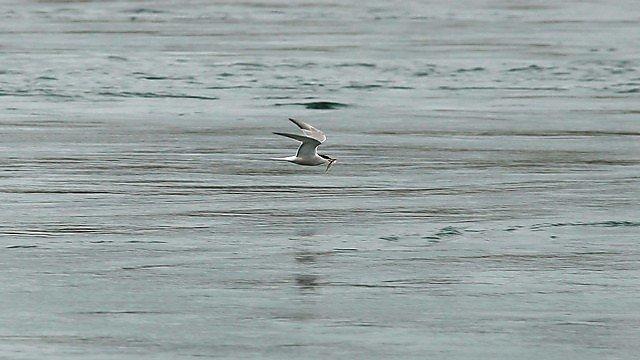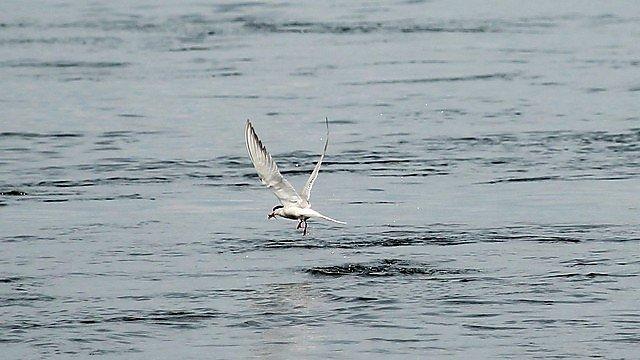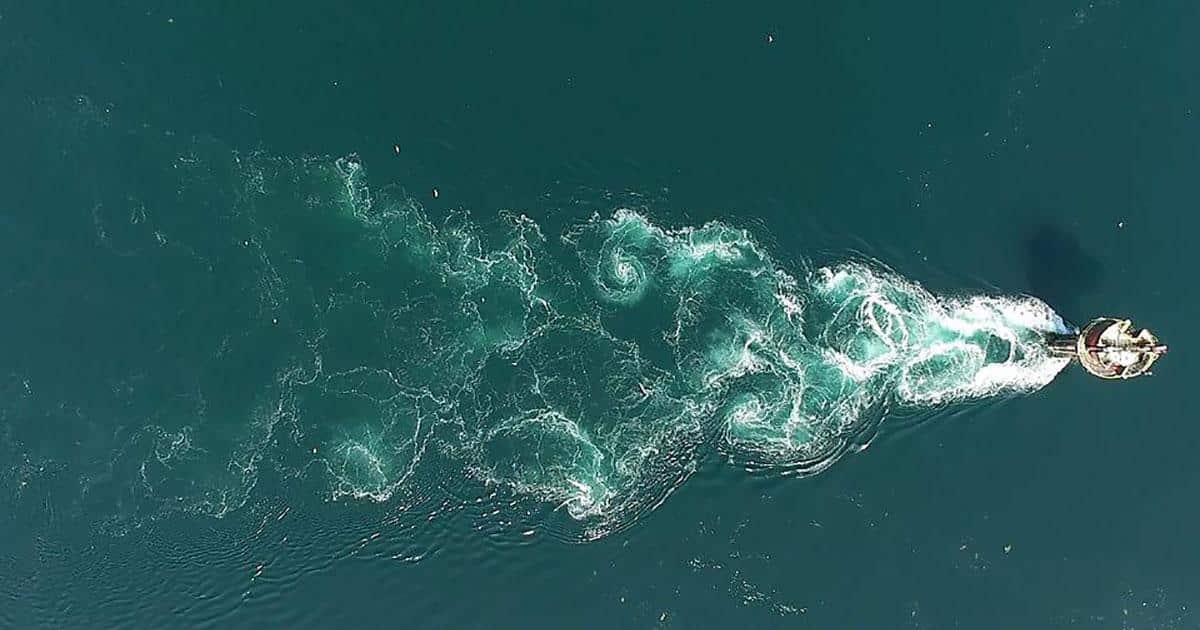Man-made structures set in tidal streams can be a feeding hotspot for seabirds, according to new research involving the University of Plymouth.
Strong currents interacting with hard structures – including boulders, piers or floating buoys – can generate turbulent wakes which, at times, make prey available to surface foraging seabirds, such as terns.
 For this research, marine scientists from Queen’s University Belfast, Plymouth and Bangor University focused on a tidal channel linking Strangford Lough, in Northern Ireland, with the Irish Sea.
For this research, marine scientists from Queen’s University Belfast, Plymouth and Bangor University focused on a tidal channel linking Strangford Lough, in Northern Ireland, with the Irish Sea.
The researchers investigated the number of terns feeding at two natural wake sites, a rock island and a whirlpool, and a man-made site – the SeaGen tidal energy structure.
While terns searched for food at all three features, tern numbers on average were highest at the man-make wake, which also experiences the highest currents.
Dr Lilian Lieber, Bryden Centre Research Fellow from the School of Chemistry and Chemical Engineering at Queen’s, led the research. She explains:
“The aim of our study was to understand predator responses to environmental change; such as how man-made structures cause changes to local flow dynamics and how this may affect seabird foraging. We found that SeaGen’s wake has the power to mix up the entire water column, making potential prey items more accessible to foraging terns, similar to a prey conveyer belt. We used a combination of vantage point counts, drone flights, hydrodynamic modelling and hydroacoustics (using sound to measure underwater characteristics) and found that SeaGen’s wake generated the most intense foraging hotspot for terns, coupled to the flood tide.”
Co-investigator Dr Alex Nimmo-Smith, Associate Professor in Marine Physics at the University of Plymouth, used UAVs (drones) to record video from above the wake features to observe the exact seabird foraging regions in relation to the turbulence in the water.
He developed computer software to automatically and reliably extract, identify and track seabirds using machine learning. He added, “The drone provided an eye in the sky, allowing us to track the highly localized foraging behavior of the terns over SeaGen’s turbulent wake structure. – Tracking the seabirds is quite challenging when they are flying over turbulent water containing swirling foam and waves. But it enabled us to learn they are specifically foraging over the wake (and the man-made wake in particular) – so they are not just in the general vicinity of these features, but actually using the turbulence in the water to their benefit.”
 Writing in the Nature research journal Communications Biology, the researchers said they cannot determine if this had an overall positive effect on the local seabirds, but their research highlights the ecological implications of changes in local flow patterns to top predators when installing or removing offshore structures.
Writing in the Nature research journal Communications Biology, the researchers said they cannot determine if this had an overall positive effect on the local seabirds, but their research highlights the ecological implications of changes in local flow patterns to top predators when installing or removing offshore structures.
The expected removal of SeaGen tower will give the researchers the opportunity to investigate how these patterns will change following the completion of SeaGen’s decommissioning.
Story by University of Plymouth
Access the article here.

